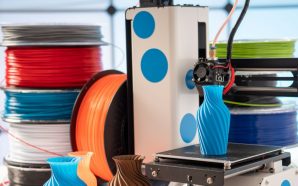Nowadays, the lines between distinct gadget categories have blurred — and there is actually little or no separating one type of gadget from the next. Smartphones are increasingly enormous and all-purpose, whereas laptops are doubling as tablets and tablets are attempting to behave like laptops. Any one of them can make calls, given the proper data connection. Probably the most significant distinction amongst cell products at this point might merely be their platform — and even the implications connected to that are in a constant state of flux.
Enter Google’s Pixel C, a new convertible tablet that doubles as a laptop computer, and yes, it can make and receive calls with a Wi-Fi connection. The Pixel C is type of like a sister product to the Chromebook Pixel — only rather than running the browser-centric Chrome OS, as its sibling does, the Pixel C runs pure Google Android. And where the Chromebook Pixel appears like a laptop that happens to have a touchscreen, the Pixel C seems like a touch-centric tablet first — with an optional keyboard that connects to it.
You can purchase the Pixel C for $499 with 32GB of storage or $599 with 64GB. The physical keyboard attachment is sold separately and costs an extra $149.
Pixel C – The Tablet
Source: Google
The family connection is most obvious in the realms of style and design. Just like the Chromebook Pixel, the Pixel C is beautifully crafted and made to look as premium as it could be, with an elegant silver aluminum exterior and a distinctive multicolored light bar that illuminates during use. In a neat twist, the light bar additionally doubles as an interactive battery indicator: At any time when the system is idle, you may tap it twice to have it show you how much energy is remaining.
The exquisite silver body & the multicoloured light bar – Source: Google
At its core, the Pixel C is a 10.2-in. tablet — and in that regard, it is a pleasure to use. The metallic casing feels smooth and luxurious beneath your fingers. At 1.1 lb., it is not the lightest tablet around, however it appears robust and durable and is quite comfortable to hold (utilizing two hands, which is pretty much par for the course with a device of this dimension).
The standard qualifiers associated with LCD displays do apply: Colours on the Pixel C’s display are a bit less vibrant and saturated than what you’d see on an AMOLED panel, and blacks appear somewhat grayish instead of being totally darkish and deep. However truthfully, that is picking nits once we’re speaking about a display of this caliber. You’ll only notice this if you are comparing AMOLED displays side by side.
The Pixel C’s display makes use of an uncommon aspect ratio of 1:√2 (about 1:1.41), which is similar to a regular sheet of A4 paper. That makes it more box-like and less widescreen than the 16:9 or 16:10 ratios that are more widespread on Android tablets.
The setup feels quite natural for tasks like browsing the Net or scrolling by text-centric apps like social media services, word processors or news reading tools. It is less ideal for watching movies, which are typically created with widescreen displays in mind and consequently end up playing in the middle of the display with prominent black bars on the top and bottom.
The tablet experience
The rest of the Pixel C’s hardware is fairly straightforward: The machine has decently loud but hollow-sounding speakers on each of its shorter side edges. And the tablet has only two ports: a 3.5mm headphone jack on one side and a USB-C port on the other.
The USB-C port lets you plug in a cable in any direction, which is sweet after years of fumbling with one-directional USB connectors. It also allows quick charging and the power to charge one USB-C gadget from another. The standard is still pretty new, so you might have to stock up on extra chargers and cables for now, but it’s anticipated to turn into the norm on many laptops, smartphones and tablets in the coming years. , unlike the Chromebook Pixel, the Pixel C’s USB-C port doesn’t presently double as an HDMI-out port (even with an adapter). Google says such a function may be added via a future update, however there isn’t any guarantee. The Pixel C additionally lacks an SD card slot for supplementing storage.
Performance on the Pixel C, meanwhile, has been flawlessly speedy, with nary a stutter nor sign of lag anywhere within the system. The tablet’s stamina has been equally stellar: Even with several hours of active on-screen use, We’ve yet to come close to running low on battery within a single day. Plus, with the minimal standby power consumption that Google’s Android 6.0 Marshmallow software permits, the tablet can stay on all night and lose only a couple of points of battery. All said and told, most individuals should not have any problem leaving the tablet on around the clock and getting multiple days between charges.
Concerning the software: The Pixel C runs a pure and unadulterated version of Google’s latest operating system, with none of the arbitrary visual modifications or bloatware we often see added in by third-party manufacturers. The result’s a lovely and intuitive environment, with no superfluous litter and a consistent design language that extends from the system UI to the ecosystem of apps around it. The user interface makes an immeasurable impact in what a device is like to use, and that alone is sufficient to put the Pixel C in a league above most other Android products.
Technically, the Pixel C runs Android 6.0.1 Marshmallow, however the modifications from the base 6.0 launch appear to be pretty minimal. The only significant visible difference is that the main system buttons are now justified to the sides instead of being centered, with the Back and Home keys on the far left of the display and the Overview icon on the right.
Last but not least, the Pixel C enjoys the same upgrade guarantee as Google’s Nexus gadgets, which implies you will obtain future Android OS upgrades quickly and reliably together with ongoing monthly security updates, all directly from Google.
The physical keyboard
It’s passable but not great. There are some clever things in regards to the keyboard’s design and implementation, however trying to use the system as a laptop for real productivity-oriented work is simply not a wonderful experience.
A lot of that’s related to the software: A cellular-first operating system like Android still is not designed for the kind of extra intensive work flow that is normal on a laptop computer. Simple things like snapping back and forth between different apps, while certainly possible, are far less instantaneous and effortless on Android compared to a desktop-centric setup. Time-saving hotkeys you may be accustomed to using on keyboard-based systems do not work consistently, for e.g. using Ctrl-S to save a document etc . And numerous sites do not play nicely with mobile browsers, which might make basic tasks like filling out forms or inputting text into a content management system irritating and arduous.
That being said, Google has been making progress on improving Android’s productiveness potential — little by little. The search giant’s Google Docs word processing app, for example, now lets you split the display screen in half and search the Web for data while actively working on a doc, which is a helpful feature. However all in all, trying to do intensive input-oriented work on the Pixel C always feels somewhat awkward — like you’re working extra laborious to power a round peg into a triangle hole. And software is not the only cause.
On the hardware front, the Pixel C has high-quality keys and an impressive amount of resistance — however cramming a full keyboard into an area that is roughly 9.5 in. long is inevitably going to require a certain degree of compromise. Typing on the machine is akin to typing on a really good netbook: you can adapt to it pretty quickly and can get by well enough, however in the end, it is simply not as comfy as typing on a regular computer keyboard.
The Pixel C additionally does not have a trackpad, which seems unusual while you’re utilizing it like a laptop — as you must move your palms off the keyboard and then reach up to tap the display every time you wish to “click” on something. Even simply returning to your home screen requires an on-screen tap, as the keyboard has no such function keys. And while the magnets holding the tablet in place are extremely robust, the display does still wobble each time you touch it — just enough to remind you that you are not using a holistic gadget.
It is difficult to not compare the arrangement to Dell’s Venue 10 7000, a similarly conceived convertible Android tablet that managed to implement a more fully equipped and backlit keyboard in addition to a trackpad into its lower half. The experience on that system feels way more natural and laptop-like because of this.
Attractive as it may be, the nature of that mechanism is what causes the area on the keyboard panel to be so restricted, since a lot of the surface space is taken up by the hinge-hiding panel. It also causes the machine to feel decidedly like two separate items — a tablet sitting on a keyboard attachment — instead of feeling like a cohesive whole, as Dell’s convertible does.
On the plus side, the Pixel C’s keyboard pairs quickly and automatically via Bluetooth as soon as it’s connected. And keeping it charged is hassle-free as can be: All you do is attach the keyboard magnetically to the tablet in the “closed” position, with the tablet’s screen facing downward against the keys, whenever you aren’t using the device. The keyboard then pulls a small amount of energy from the tablet so that it never runs low.
Bottom line
When we talk about whether the Pixel C is worth buying, we really have to talk about it as two separate products. As a high-end Android tablet, the Pixel C has what’s easily one of the best overall user experience you will find on such a device at present. From the premium materials and striking design to the excellent display and top-notch software — not to mention the timely ongoing OS and security upgrades — no other option even comes close.
At $499 for 32GB or $599 for 64GB, it is not low cost — however it also is not that unreasonable in comparison with different tablets in its class. And you actually are getting an awful lot of bang for your buck, provided a top-of-the-line tablet is what you are after.If you factor in the $149 keyboard, things get somewhat more sophisticated. Between its inherent hardware and software limitations, the Pixel C just is not ideal for intensive or prolonged productivity use. But while the Pixel C may not be an appropriate full-fledged laptop alternative for most individuals, its worth as a convertible device is really all relative to your own personal needs and price range.
If what you want is an awesome tablet that is also fairly good for limited lightweight input — a “tablet-plus,” so to speak, that makes it easier to respond to a lengthy e-mail or pound out the occasional quick document with out having to power up your laptop — the Pixel C with its keyboard might be just the product for you. We could see it serving as a handy supplementary gadget for a lot of folks in that regard. But $648 to $748 is a lot to pay for a device of that nature.
If you’re looking for a first-class full-sized Android tablet, get the Pixel C. You will not be disappointed. However think twice before shelling out for the complete keyboard bundle. We would not flat-out advise against it; We’d simply say it is important to think about your expectations and whether the price will be justified by the system.









Woah! I’m really digging the template/theme of this site. It’s simple, yet effective. A lot of times it’s hard to get that “perfect balance” between superb usability and visual appeal. I must say you’ve done a superb job with this. Additionally, the blog loads extremely quick for me on Opera. Superb Blog!
Amazing! This blog looks exactly like my old one! It’s on a entirely different topic but it has pretty much the same layout and design. Wonderful choice of colors!
Excellent read, I just passed this onto a friend who was doing a little research on that. And he just bought me lunch since I found it for him smile Therefore let me rephrase that: Thanks for lunch!
I really love {your blog|your
I will right away {take